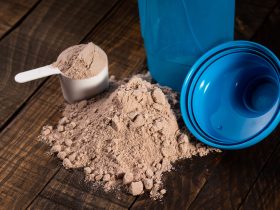Explosive Lifts + Heavy Weights!
It’s no secret that lifting heavy makes magical things happen.
When you lift heavier weights, you stimulate a greater number of muscle fibers, which triggers a bigger anabolic response. This is required for gaining muscle and strength, but too many people focus exclusively on lifting.
While Maximum strength is a vital component towards building a stronger, more athletic body, it can only take you so far. True strength and power require the optimization of many properties, which is where Triphasic Training comes in.
Picture your muscles like a loaded slingshot.
When you pull back to load the sling, you build tension, and the more tension you build, the more explosive the shot. Triphasic training is the slingshot that builds more tension in your muscles.
A Brief History of Triphasic Training And Time
In 2003, Cal Dietz, the head strength and conditioning coach at the University of Minnesota found that while two athletes might have been equally strong in the weight room, one athlete could generate far more force on the field than the other.
Studying more, Dietz found that maximum force (as measured in the weight room) had nothing to do with optimal output on the field. Furthermore, the key to optimal performance and speed does not lie within the concentric phase of the lift, rather true strength happens in the eccentric and isometric phases of a lift.
Now, what does that mean?
Rather than regurgitate a full textbook, just know that anything explosive begins with an eccentric load. (It’s most commonly observed during jumping and while descending slowly into a squat.)
Then there’s isometric action, which happens when the muscle remains at a constant length. (These are commonly known as pauses or holds, and typically lead to increased force and power outputs.) Concentration is known as the measurement of how much you can actually lift and is the most common action performed by lifters.
Here’s How It Relates To Your Workouts
If all you do is constantly train your bench press and continue to bounce the bar off your chest to gain momentum, you’ll never see progress.
That’s like a turboprop trying to outperform a commercial jet engine.
It’s never going to happen.
Going too hard with a heavy load every time you hit the gym will only cause damage to your nervous system and causes serious fatigue.
The key to maximizing strength, size, and performance isn’t about being the strongest person in the room. Rather, it’s about producing more force in less time, and including isometrics and eccentric training in your workouts.
So, does that mean that all I have to do is just lower the bar a bit slower, do some pause sets, and I’ll get stronger?
Not exactly. Ask anyone who has gone through a rigorous training cycle. You’ll quickly learn that lifting heavier weights all the time and forcing reps only lead to exhaustion and causes injuries.
Just like how a chain is only as strong as its weakest link, if you continue to rely on training the maximum strength portion of your lifts, you’ll have one strong link and two weak links. With triphasic training, you’ll be strengthening those other two links.
That said, intense sessions like these aren’t for everyone, and shall you decide to give it a try, here are a few guidelines to follow.
Due to the high amounts of stress and volume, most people will do well in a six-week training phase that is broken up into three two-week cycles, with each cycle focusing on one of the three phases (eccentric, isometric, and concentric).
Triphasic training should be performed with the first exercise of a given training day. The last thing you want to do is perform this style of training when you are fatigued. As such, deadlifts, squats, heavy rows, and presses work best.
Let’s Talk About What Each Phase Does
Eccentric Phase
Since every dynamic movement begins with an eccentric action, it only makes sense to strengthen that portion of the lift. Here are a few rules as it pertains to eccentric training:
- Never perform eccentric training over 85% of one-rep max.
- Always use a spotter. You’ll be spending a lot of time under tension which means your muscular system could go out on any given rep. It’s best to play it safe.
- Finish each rep as explosive as possible. Your goal is to explode out of the lift as fast as possible.
Isometric Phase
Isometric training allows the muscle to explode fast and hard like a slingshot. The more you’re able to create tension in the muscles, the more power and speed you’ll be able to produce.
- Move fast, then hold hard. When you perform isometrics, you need to move through the eccentric position fast so that you don’t break the momentum.
- Create tension throughout the entire body by squeezing every muscle as hard as possible. It should feel like the longest 5 seconds of your life.
- Finish strong. Come out of the hole as fast as possible. If you can’t, then the weight is too heavy.
Concentric Phase
This is the phase that gets all of the attention: the phase that measures how much you can lift. But the true measure of concentric strength is how well you can flow through the eccentric and isometric phases. When you learn how to maximize those, only then will you truly be your strongest.
